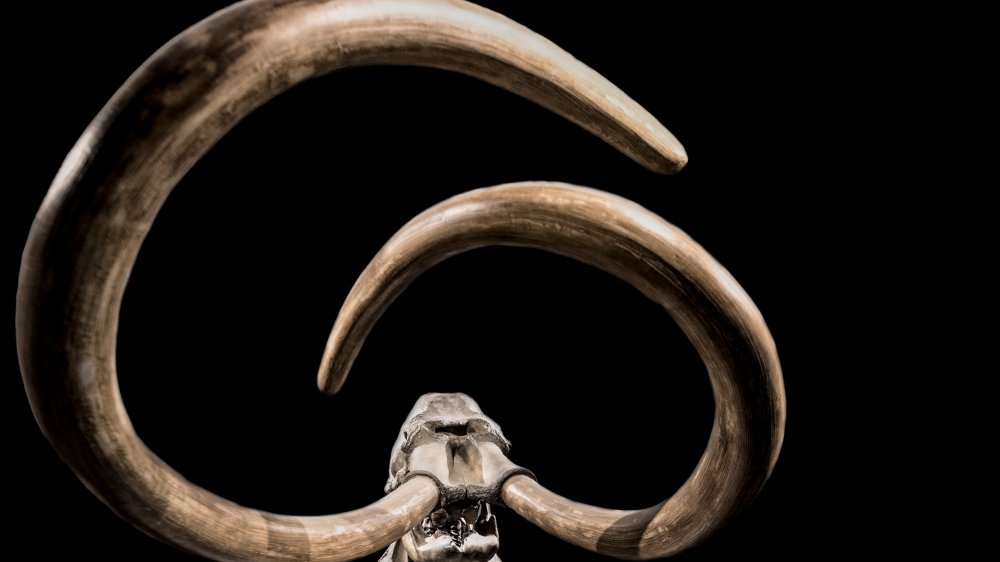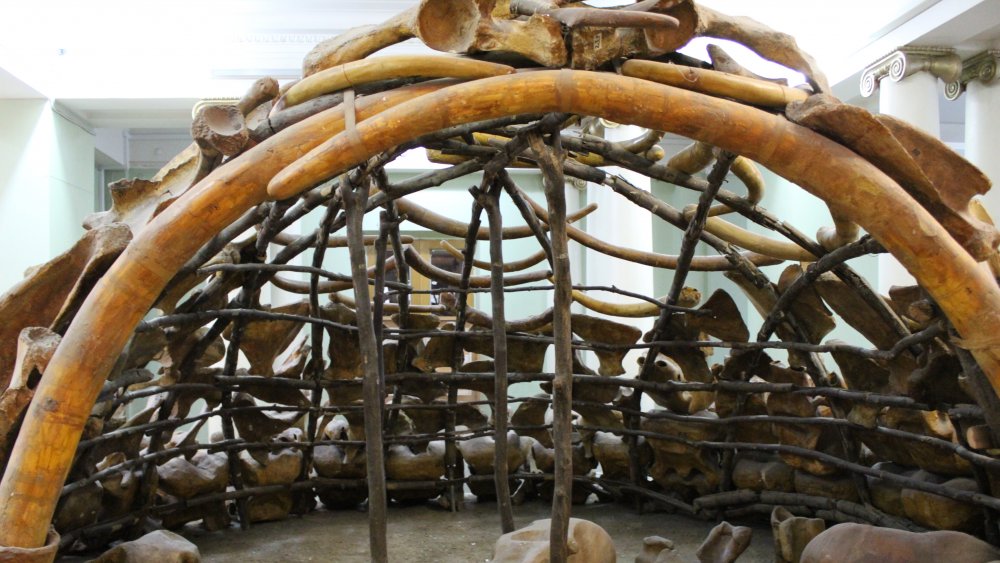Bizarre Ice Age Structure Made From Mammoth Bones Discovered In Russia
You don't normally call someone a caveman as a compliment. That epithet typically suggests the person is the pits, the Labrea Tar Pits, a bottomless pit of knuckle-dragging, jut-browed crassness that utters guttural sounds and drools profusely as they pick cave lint out of their way-too-hairy navel. And they smell. Cavemen literally lived in the Stone Age, which may have started more than 3.3 million years ago, via Encyclopedia Britannica, and progressed at a glacial pace, thanks to the Ice Age — also known as the Pleistocene Era — which began about 2.6 million years ago and overlapped with the Old Stone Age, or Paleolithic Era, with both periods ending 11,700 years ago.
Back then, people led a hunter-gatherer lifestyle, relying on caves, rocks, or branches as transient shelters, per Live Science. It might be easy to imagine these prehistoric hobos being frozen in an un-evolving, bare-bones past, but Ice Age humans were way cooler than stereotypes or even scientists have given them credit for. They fashioned musical instruments out of animal bones, created cave art, and carved "Venus" figures. They even made primitive Geico commercials (probably).
Best of all, cavemen managed to build elaborate structures out of mammoth bones, without looking like savage serial killers.
A mammoth bone to pick
Archaeologists have been discovering circular structures constructed from woolly mammoth parts in Russia and Ukraine since the 1950s, according to the Smithsonian Magazine. The University of Exeter says about 70 exist in total. Experts interpreted them to be dwellings that helped prehistoric hunter-gatherers combat the cold during the Ice Age. Hence, the bone buildings have also been called "mammoth houses," which is kind of like calling a home made from the decapitated heads of Cabbage Patch Kids a dollhouse, but whatever. In 2020, archaeologists from Exeter discovered an enormous structure made from over 60 mammoths.
Located about 311 miles south of Moscow at a site called Kostenki, the behemoth bone building consisted of 51 lower jaws, 64 individual mammoth skulls, and possibly Manny, the mammoth from Ice Age. It dates back about 25,000 years, making it the oldest mammoth structure in the region by about 3,000 years. Boasting a roughly 40-foot diameter, it seems too big to be a house, so it's unlikely that it was used for an extended period of time. and researchers found the charred remains of ... not Manny, hopefully, but rather, an array of plants and bones burned there, which may indicate that they had a mammoth cookout. This may have also served a ritual purpose.
But for now, the truth will remain a mammoth mystery.

